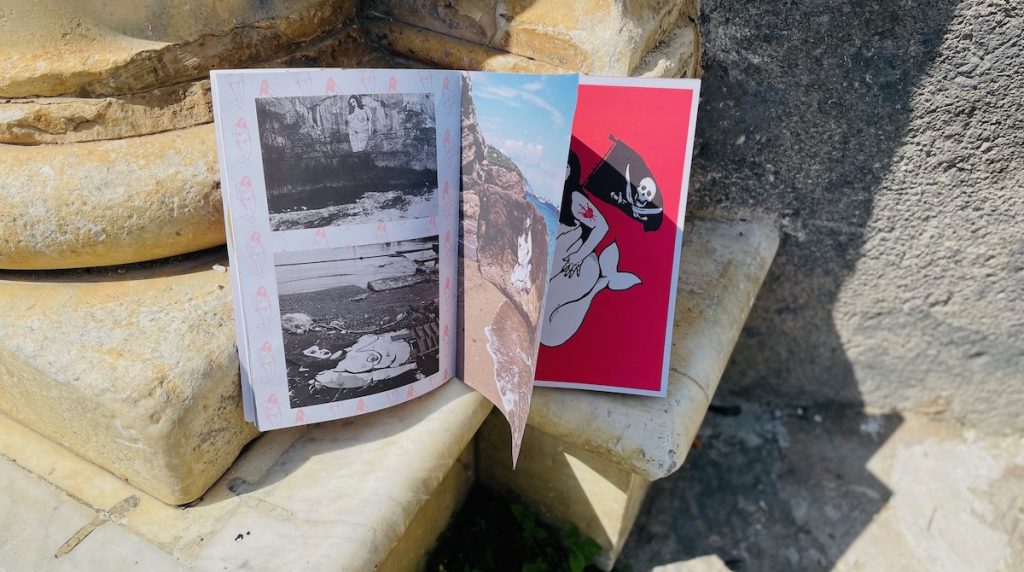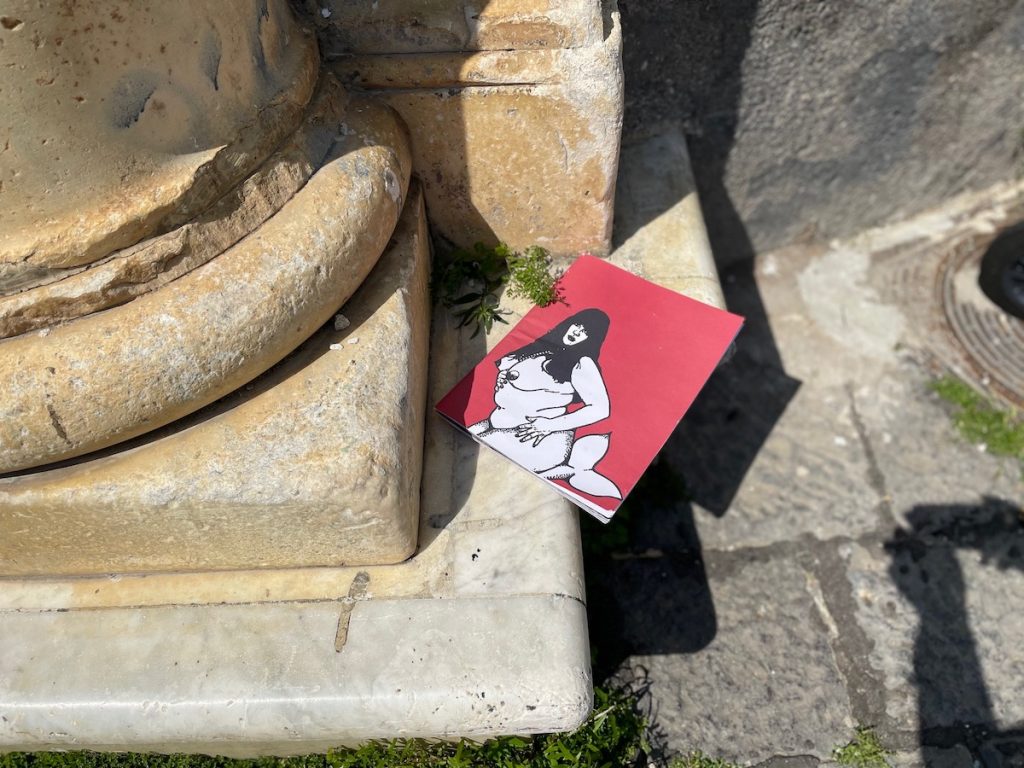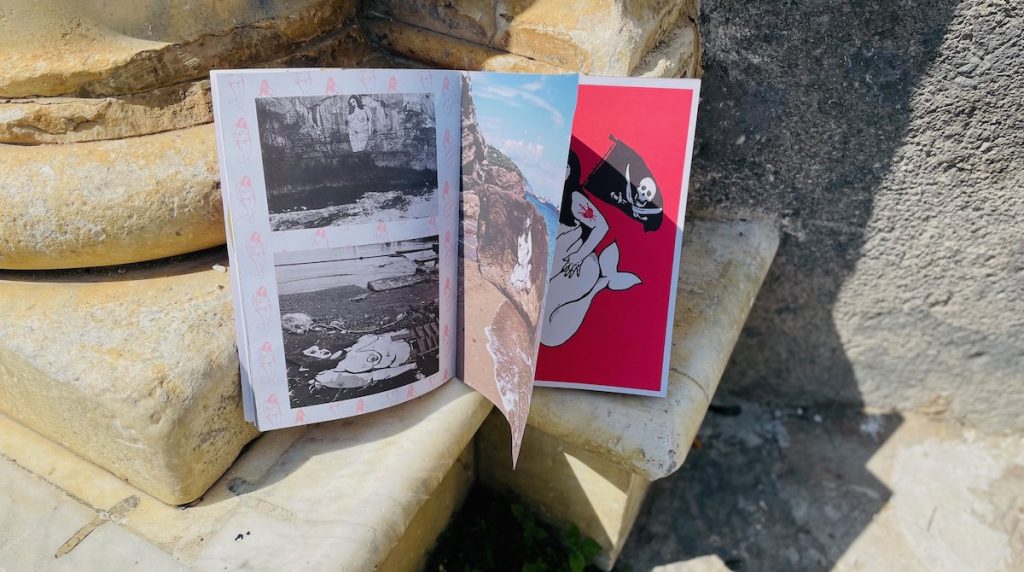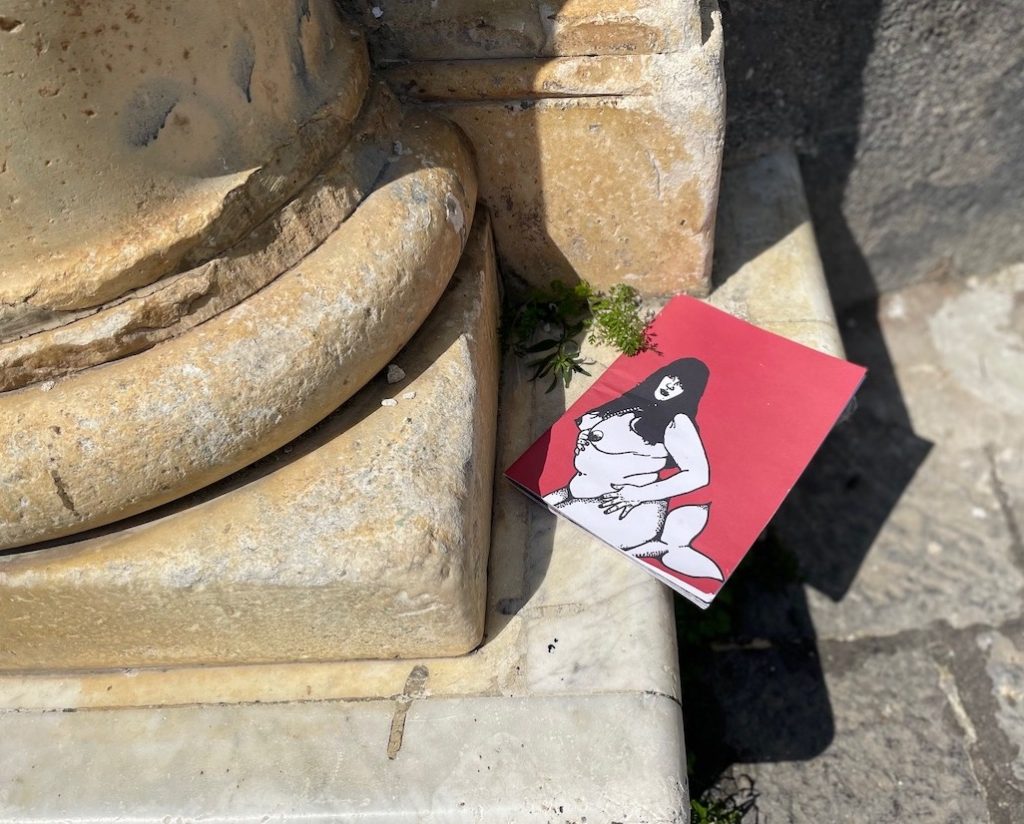Late morning: I crouch on a monumental staircase, all around swarming policemen and other listless controllers trying to make a big voice with the haggard passers-by who in turn are looking for just a little air and a little light.
I am alone, I am not afraid and I have no intention of returning to my can of tuna/home and I choose a step kissed by a pool of light, vitamins and well-being.
I open the red book, happy above all to smell and get my hands on freshly printed paper in an unfortunate period like the Anno Domini 2021 mass confinement. And #savethemermaids saved my soul.
The illustrated book or rather the fanzine by Trallallà – we interviewed him for you! – for the types of Magmata is also on Amazon, but to order it we recommend you to write to the publisher, Alfonso, who will be happy to send it to you.
I read the first lines of one of the two essays, the one at the beginning of the volume – Il Silenzio delle Sirene by Luca Forgione and I think that – although it is an illustrated artist’s book – the (few) words present are simply perfect also for a sui generis non-fiction publication.
Luca Forgione, a philosopher, walks like me in the city: the sun caressing the pedestrians and the architecture dictate the choice of roads to take, putting even more fervor in the mind that thus collects more lively the movements of the soul and memories.
Forgione reflects on Naples starting from the passage of time, if we think that one of the most prominent sundials in the city (located in Piazza Dante) bears a maximum pervasive engraving: (equation of time). Time as history, as accumulation, as a rupture, as laissez-faire.
At the end of the volume, Gennaro Ascione plunges us into a self-ironic battle, which is actually very serious, between history and cliché that starts from the myth of Partenope, the Islet of Megaride and … reaches the ‘controra’!
In between, a reportage of places that hosted the Trallallà’s Sirens: the most beautiful shots are those in which the streets of the historic center with its shops are recognizable but also those born to be only imagined for the lens as the sirens on rocks of the sea or on half-demolished boats.
You should know that usually the ‘look’ at that sea in Naples is mostly denied unless you dwell in a Posillipo ultra-rich villa.
Especially for those who have never been in town, #SaveTheMermaids could also represent a small Naples trip even staying where you are that will surely mortgage a next visit to the city, perhaps asking the author, Trallallà, or the publisher Alfonso, to stroll with you on a tour of the Greek-Roman downtown area.
Trallallà: ’Save The Mermaids is a research on the figure of the mermaid, the most famous myth of all time. A symbol that unites contrasting elements, synthesizing them in new figures, it lends itself well to recounting the violent contrasts that Naples continually recomposes.
It is no coincidence that the founding myth of Naples is a mermaid, Partenope. I imagine these figures crossing the alleys of the ancient city, smelling of the sea, looking you in the eye, in a fatal encounter.
My mermaids are fat, like most of the women I draw, because seduction and beauty are not a matter of size or weight, with all due respect to the standards they try to impose on us. Think what an advantage for the producers of goods the one size fits all! ‘
Diana Marrone: A reason to buy it, a reason to don’t buy it and a reason to give it away?
Trallallà: ‘Buy it because it is beautiful, and to support courageous publishers like Alfonso. Don’t buy it, but get it as a gift. And give it away because a gift is an act of love and there is nothing we need anymore.
Trallallà, Save The Mermaids , editions Magmata, 2021
Paperback, illustrated
EAN: 9788890423789 – Euro 8



